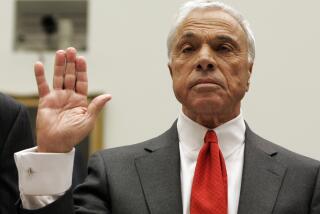‘The Savings Scandal’
Your editorial appropriately questions whether or not there was an adequate federal policy at the time of deregulation of the savings and loan industry. Two additional questions must be asked. First, what happened during the period 1978-1980 to cause this crisis? Second, what can be done today, in addition to assessing blame, to cure the problem?
It shouldn’t be forgotten that 1978-1980 was a critical juncture during which the savings and loan industry was forced, rather than allowed, to increase its interest rates on savings in order to compete with the new money-market accounts of the securities industry. At that time, unfortunately, there was no public policy which answered the question: How can you increase the cost on the liability side of your balance sheet (savings) without increasing the income on the asset side (loans and investments)? It was not until years later that the industry was allowed, after a difficult fight, to balance its investments by moving from fixed-rate mortgages into variable-rate mortgages and adjustable-rate mortgages.
As to the future, there is no question but that unfettered authority to overly diversify in risky investments is bad and should be stopped. This does not mean, however, that there should be an abandonment of the savings and loan industry’s primary function, which is to promote thrift and encourage home ownership. Furthermore, the public cannot ask this industry to pay an unlimited amount on savings accounts and not balance the equation by allowing sufficient income to make a profit and strengthen its capital position.
In short, assessing blame is not enough. People of good will within the industry, regulators and members of the executive and legislative branches in Congress and in the states must meet and find solutions. Assessments against healthy members of the industry will not be the answer.
Terms like “taxpayer bailout” and “megabuck bailout investors” confuse and do not answer the issue. There certainly will be an obligation on the part of the Congress and the Treasury to make good upon “the sticker in the window” which guarantees the safety and soundness of savings accounts and of the industry.
ROBERT M. SHAFTON
Los Angeles
More to Read
Inside the business of entertainment
The Wide Shot brings you news, analysis and insights on everything from streaming wars to production — and what it all means for the future.
You may occasionally receive promotional content from the Los Angeles Times.










